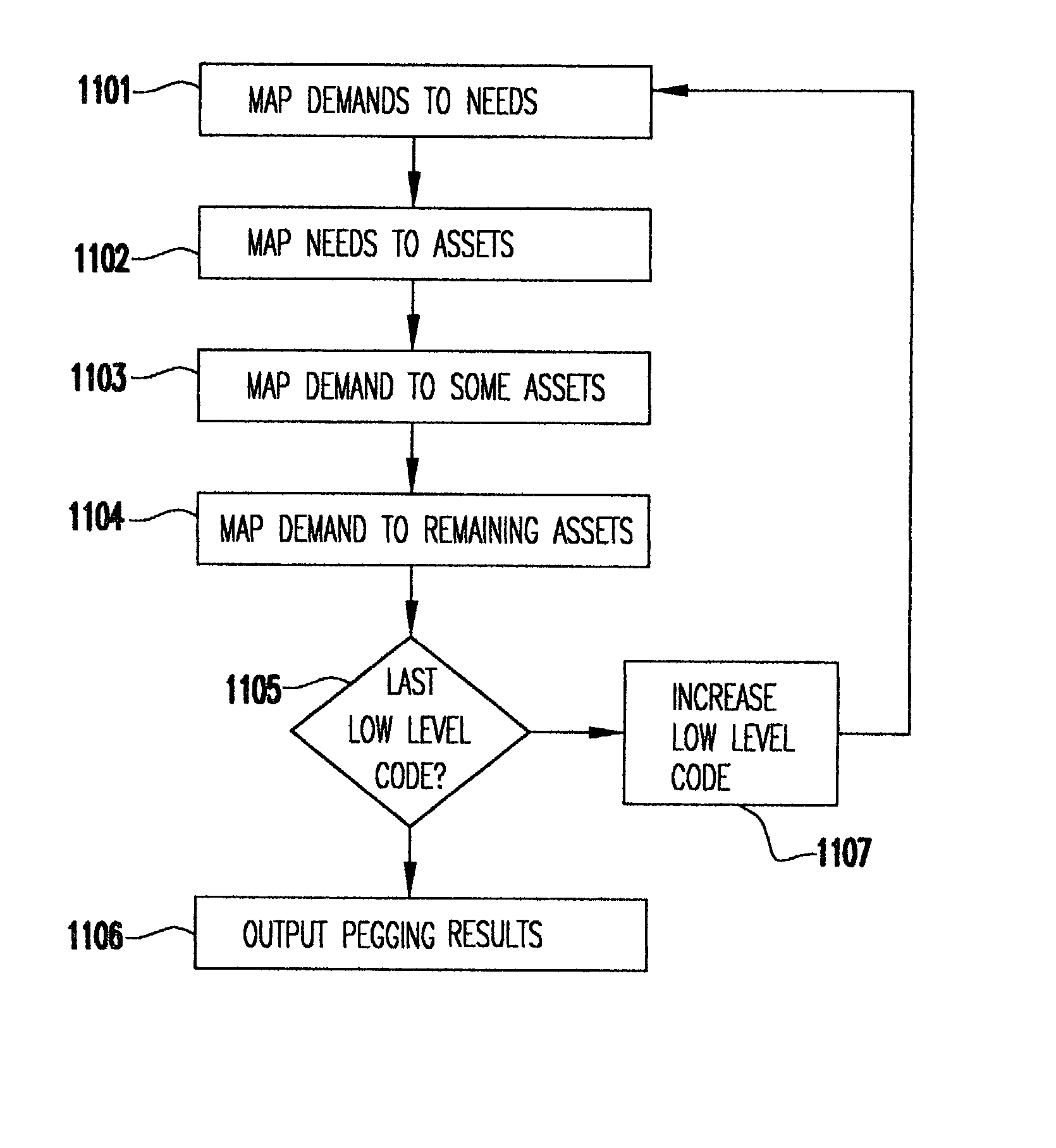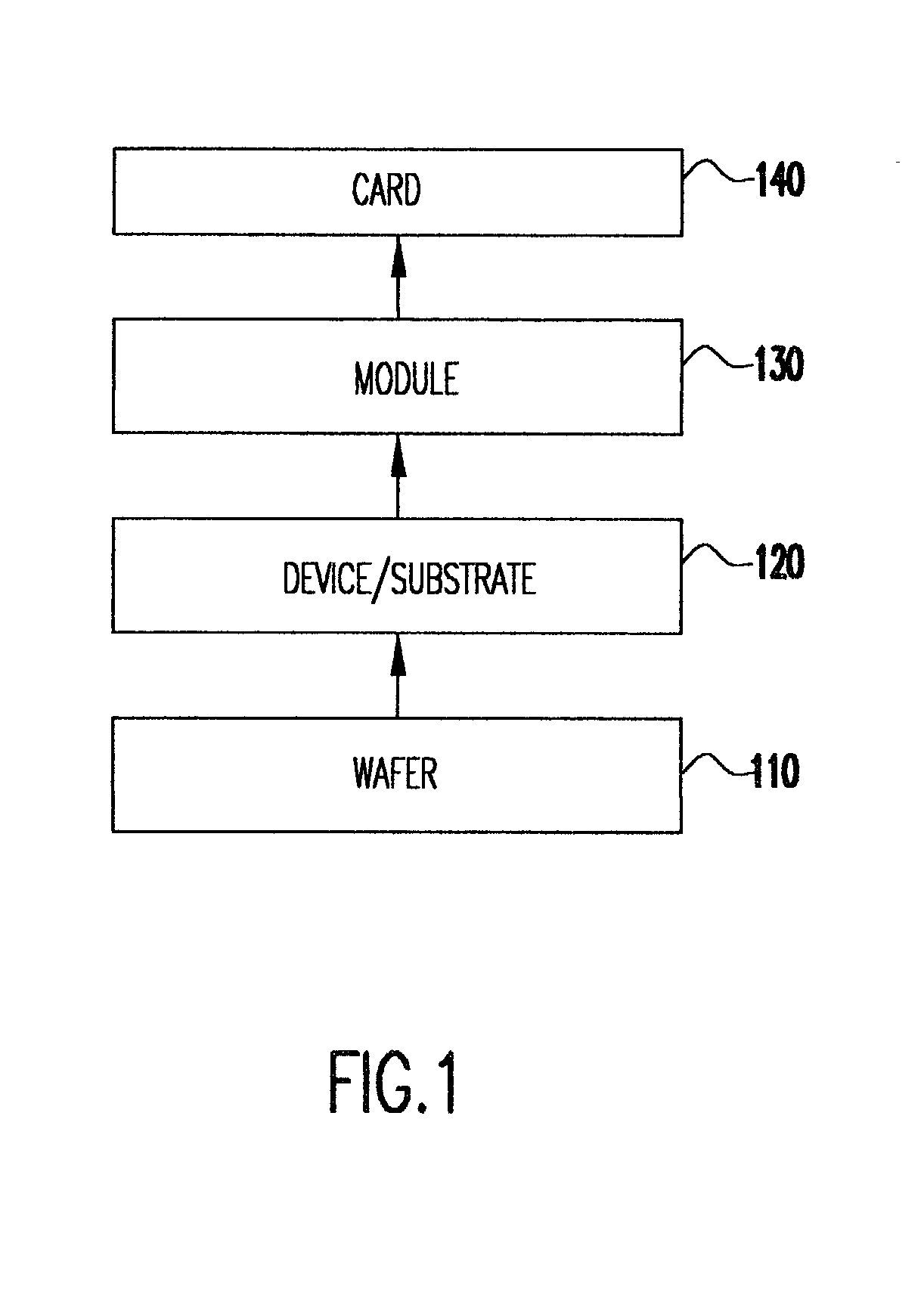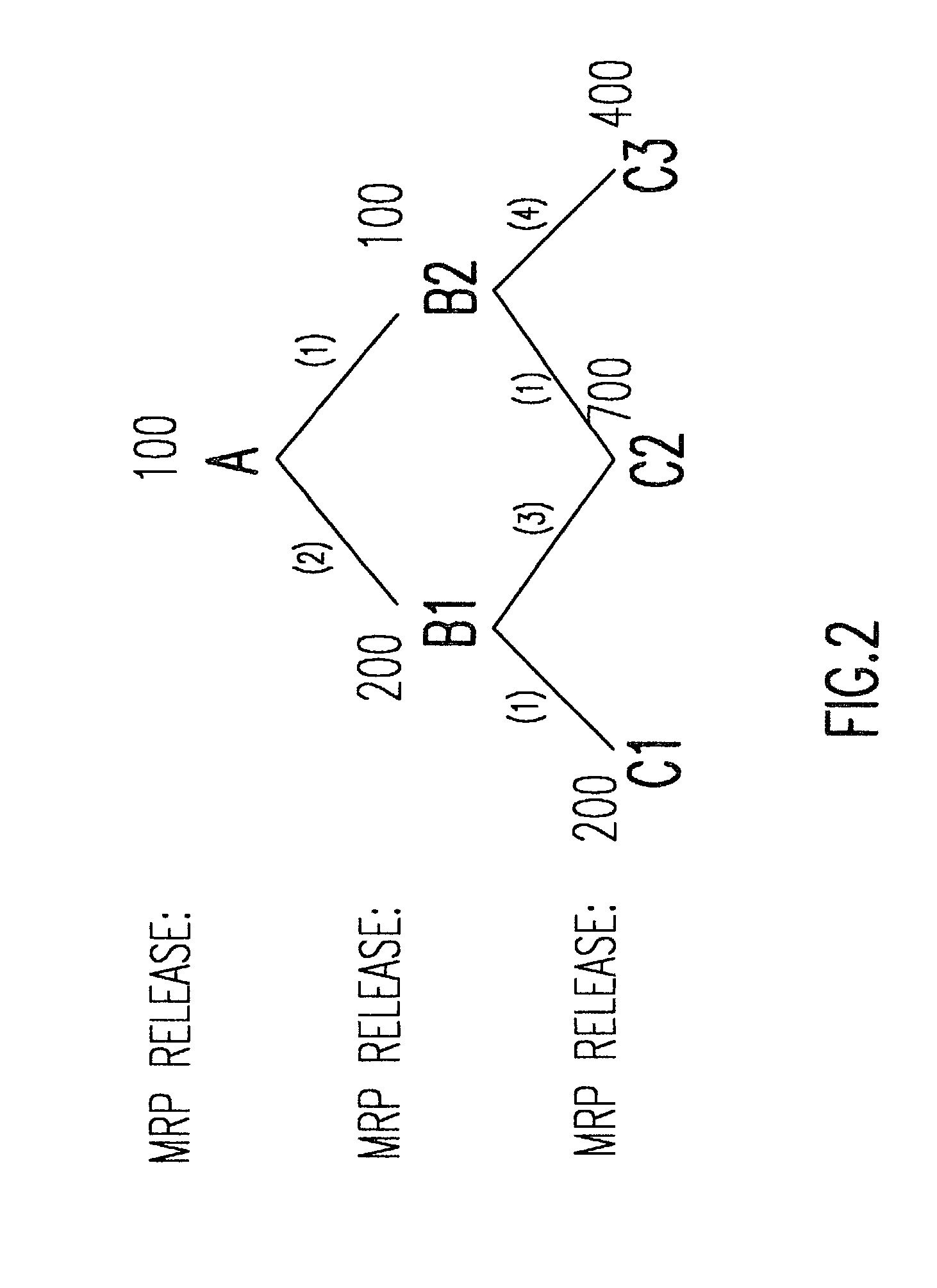Decomposition system and method for solving a large-scale semiconductor production Planning problem
a semiconductor and production planning technology, applied in adaptive control, process and machine control, instruments, etc., can solve the problems of complex trade-offs, unavoidably long lead times for processing through all manufacturing stages, complex distributed supply/demand networks,
- Summary
- Abstract
- Description
- Claims
- Application Information
AI Technical Summary
Problems solved by technology
Method used
Image
Examples
Embodiment Construction
[0072] The present invention generally relates to computer implementable decision support systems for determining a production schedule of feasible material releases within a complex multi-stage manufacturing system architecture. More specifically, the present invention is directed to a system and method for modeling of extended enterprise supply chain planning (EESCP) systems. The present invention decomposes a large-scale RA problem to reduce computation time, allow for mixing of modeling methodologies (including LP and heuristic methods) and the application of nonlinear business rules. The approach uses optimization based modeling for a large-scale EESCP problem which involves generating a centralized enterprise-wide plan which optimizes the use of MD enterprise resources (supply and capacity) to best satisfy a demand statement which includes current demand and future demand forecasts. This approach allows for a general model capable of conforming to multiple process architecture...
PUM
 Login to View More
Login to View More Abstract
Description
Claims
Application Information
 Login to View More
Login to View More - R&D
- Intellectual Property
- Life Sciences
- Materials
- Tech Scout
- Unparalleled Data Quality
- Higher Quality Content
- 60% Fewer Hallucinations
Browse by: Latest US Patents, China's latest patents, Technical Efficacy Thesaurus, Application Domain, Technology Topic, Popular Technical Reports.
© 2025 PatSnap. All rights reserved.Legal|Privacy policy|Modern Slavery Act Transparency Statement|Sitemap|About US| Contact US: help@patsnap.com



